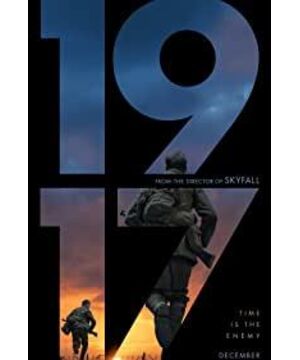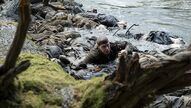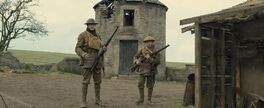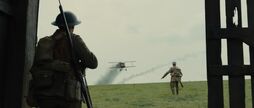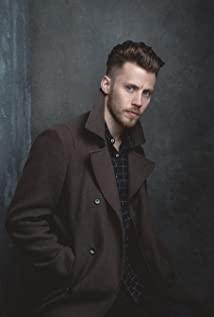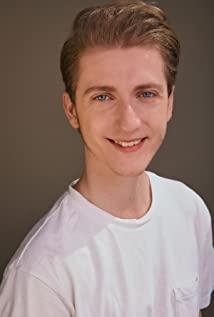Thanks again to Netflix and Landmark. One is streaming media and the other is an independent theater that is right at home and has a friendly schedule for baby dads and moms. I’m a movie troublemaker who has nominated most of the Golden Globes or Oscars for Best Picture Movies including "The Irishman", "Marriage Story", "The Pope's Inheritance" and "1917" have been watched, which is really touching.
After watching it, I feel that if there are only these four movies, this year's Oscars may be produced between "Marriage Story" and "1917". Although "The Irishman" is good, it does not surpass the godfather. Many people still have doubts about the de-aging film technology. "The Inheritance of the Pope" should be based on the role of the male lead, and there is not much room to play in the story and film director; "Marriage Story" is the Kramer couple in the 21st century. Achievement, the next step is this amazing "1917".
I always feel that film is a perfect combination of technology and art. As a director, only technology is obviously not good, such as Marvel DC; of course, only art is not good, such as the case of various directors who failed to change careers. Of course, most directors have a focus, even if they are very good directors. For example, Nolan, which I like, is obviously more technical, while Li Ang is an artistic background, walking on the road of an unsuccessful technological pioneer. Most of the time, and this "1917" really makes me feel like a director who has reached perfection both artistically and technically.
The story itself is simple: in the spring of 1917, on the French battlefield of World War I. Two soldiers were selected to deliver an important piece of information that could save the lives of 1,600 British soldiers, including the brother of one of the soldiers. The problem is that this task seems impossible: the enemy's front line, trenches, scorched earth...and they have only two people, and less than 24 hours.
Under this setting, what would you do if you were a director? You can play into the biographies of saints like "Blood Battle on Hacksaw Ridge", you can also make it into the humanity test like "Saving Private Ryan", or the bombardment and lofty ambitions like most war movies. But the film was made into a long shot—if not really—a immersive war experience. Imagine you are on the scene in a battle royale game, with various levels, enemies, and traps in front of you. You only have one chance and cannot come back. The only advantage is that you have two lives (two soldiers), but death The game is over. In the two hours of the film, the camera revolves around the two protagonists. Their every move, their breath, fear and hope are all included in the camera. The audience has become them, their fear has become the fear of the audience, their despair has become the despair of the audience, and their bravery has become the bravery of the audience. From a technical point of view, I think it’s worthwhile to produce a shot of at least the same length; I really hope to see Roger Diggins, who can be a god How did the famous shot in the history take these shots. He has been nominated for 13 Oscars, but never won. If he still can’t win this time, I have the urge to smash the Kodak Theater (I just found out that he won the award for "Blade Runner 2049" the year before. Home).
This story of sending information sounds so simple, but it doesn't make people have a minute of boring plot, because under the overall tense rhythm, the director also arranged a relaxed environment and setting of the scene. From the front line to the front line at the end, the journey of the two soldiers can be basically divided into four scenes. The first one is the enemy trenches. The second one is the backyard of the farm. The third is the cannonball fireworks in the night. The last one, from waterfalls, rivers, forests, to the final frontline. The settings for each scene are great, and I can hardly tell which one I like best. The second scene, those chopped cherry blossoms, the cows in the backyard of the farm, the milk in the fresh bucket, the fighter jets falling from the sky with black smoke, reminds me of Miller’s oil paintings, the vast European fertile soil, especially from The first scorched-earth enemy front line turned around, making people feel quiet and emotional. This should belong to their life! But what shocked me the most visually was the third act-when Schofield woke up from a concussion coma hit by a bullet, the light rising from the ground in his eyes was reflected in the originally beautiful town. , But now on the scorched earth that has become a broken wall, the ever-moving light and darkness seem to be illusions in his mind. In his ears are the huge explosions of cannonballs and the howling of bullets, and finally he reflects the artillery fire before dawn. A jump on the bridge is almost a textbook interpretation of doomsday aesthetics. As soon as the camera turned, he fell from the waterfall and floated in the swirling pond. There were slices of falling cherry blossoms beside him. The film goes beyond technology here and reaches the height of aesthetics.
But it's not just technology and art. This movie does not have a grand war scene, but talks about human beings in war. From enemies to comrades-in-arms, the corpses everywhere they passed were filled with the background of the entire film. In the close view, a picture of a woman in the trenches of the retreating enemy; the redemption and revenge of the enemy; in the sky, Schofield saw the hungry French woman and the newborn baby in the basement in the sky; all this was at the end of his crawling out The surface of the water was sublimated when the folk songs heard in the forest. He was originally an innocent soldier. He was accidentally picked by his comrade Blake to complete this "impossible task"; from the initial complaint, to the promise of friendship, to the courage to be saved by his comrades, and finally decided to move forward. ——These are the most memorable things in the war. It is the story that the director Sam Mendes' grandfather experienced and will never forget. It is also the key factor that made this movie rise from four stars to five stars.
I rarely watch war movies, because I can't stand the monotonous colors, the bombardment of shells, and the face blindness wearing a helmet. This movie is completely different. What attracted me was not the continuous artillery fire, but the spring fields, the cherry blossoms by the water, the brilliant fire light on the scorched earth, and the singing of soldiers in the forest. I make a bold prediction. At present, it seems that it may be the most Oscar-like movie, at least one of the movies.
-----------------------------------------------I am two The dividing line of the brush ---------------------------------------------- -
This Landmark is really a Hollywood affiliate. A few days ago, my friend showed up a special meeting for the director and the starring role on the Internet, which was this Friday night. Since I was at the door of my house, I left after eating. With the first brush experience, the second brush still didn't feel boring at all, and I saw many details that I didn't see for the first time. For such a cruel war film, the second brush is not easier than the first brush, because knowing the plot in advance, on the contrary, feel more nervous and sad before bad things happen. A few interesting details are as follows:
1. The movie begins with Schofield taking a nap under the tree, and ends with the same dozing under the tree. The beginning and the end echo, but the protagonist's mood is completely different.
2. When Schofiled entered the German trenches, he stared at a photo and looked at it for a long time. At the end, he took out his own photo. It turns out that he also has a happy family. "Come back to us" is written at the back of the photo, which is the driving force for him to live. In the middle part, he interacted with a little baby with a French woman, and he was also a portrayal of a man with a family.
3. In the basement in the middle of the night, a French woman said that she did not know the name of the baby because she was not the mother. Because she is not a mother, she does not have breast milk, so Schofield will give her his own milk.
4. The baby sleeps in a drawer of a chest of drawers.
5. After watching for a long time, I discovered that the commander who asked them to deliver the letter at the beginning was Colin Firth. To be honest, I think he played better than Benedict, who was a bit deliberate.
6. Schofield's stroke of Blake's ring and necklace is so familiar, it makes people think that he has done the same thing many times before.
There are many interesting things. The first time I was shocked by the plot, I could hardly pay attention to the camera, but this time, we tried to find out where the director was shot, but apart from the scene where Schofield had a concussion and passed out, there was almost no trace. The director himself proudly said: Some editing is obvious, but there are some friends who can't even make movies. They asked me, how the fxxk did you do it? The audience laughed. There is also the beauty of more lenses that can be noticed, and it is amazing that photography can still notice the composition in the process of shooting this kind of sports long lens. For example, after Schofield fell into the water, he found that the surroundings were shots of cherry blossom petals, which can almost be described as Buddha nature. The hope and beauty of life seen in a pool of stagnant water (in fact and metaphorically), so he can continue to work hard.
The protagonist's setting is also very interesting. In the first half, Blake has been dominating because of his brother's life-threatening, but also because of his own childishness and passion. Schofield had always been suspicious and followed carefully. But in the second half, Schofield became a hero, on the one hand because there was not enough time for intelligence, and on the other hand, he was burdened by his comrades in arms. This change is worth seeing.
After the film is over, the director and actors are seated and answer questions from the host and the audience. The actors are much better-looking than in the movie, but the director is the core, soul and creator of the whole movie, as can be seen from their thinking and expression of the movie. The following is the director's insights that I have memorized, which is very meaningful.
About the story: This story was told by the director's grandfather who had experienced World War I, but made many changes. Schofield is not his grandfather. Later Dean also shared his great-great-grandfather's experience in World War I. Europeans filming the First World War is emotional, because it is the truth that their family has experienced, and it is estimated that it is similar to ours filming the War of Resistance.
Regarding a mirror to the end: The director thinks this is a natural idea. When he wanted to shoot this story, what he had in mind was how the camera would follow the steps of these two men. The passage of time is the passage of time in reality. It is almost impossible to transmit information over a long distance, the reality they face. Difficult, what he wants is this kind of "live" feeling. He had a long shot when he was shooting 007. After success, he tried to persuade Spielberg (DreamWorks is the capital) to shoot this war movie in a one-shot way. He had been a drama director for 15 years before, and the drama was done in one go on stage without any editing. He tried his best to apply the experience of drama to this movie. It’s very difficult technically. They spent a lot of time creating the entire scene, even planting those plants, and measuring the length precisely—because length and time are combined. For a plot of several minutes, the camera has to go a certain length and length. It doesn't work, and it doesn't work if it's short.
About the actors: The director said that they stood out in the audition of hundreds of young actors. He had presuppositions about these two characters before making the movie. Schofiled is a middle-class, introverted and has his own family. His hobby may be drinking a glass of wine and reading a book; Blake is a little fresh meat, extroverted and lively, likes to tell jokes and flirt with girls. If it weren't for the war, the two men might not speak; but here they became friends. They don't know why they love each other but they love each other. This is an unusual friendship.
About the shooting of actors: It is a unique experience for actors. The normal movie is to start shooting directly, one shot at a time, but they "live" in this movie a few months before it was shot. The director emphasized the term "Live" many times. Before the cameras were set up, they already needed to be immersed in the life of the protagonist. The two actors went to Belgium and France to experience life for a long time.
An audience asked a question and praised Dean's performance at the farm. The director said that the scene was eight minutes long and was shot more than fifty times. That shot is particularly real, because the actor has a blood pump hung on his body, and in the whole shot, the actor himself can experience the blood as if it is really gurgling out of the body. What he needs is this kind of real response.
Regarding editing: especially important. This film was shot on the same day and cut on the same day, basically shooting according to the timeline, so Lee Smith is very powerful, so powerful that he can put those shots on the same day, add music, and tell the director that this is the effect after editing. Sometimes a shot is taken 28 times, and the director himself thinks that the 26th is better, but Lee will tell the director that the 12th is better because the cut is the best. "He is often correct," the director said. He also gave an example. In the latter part of the film, there is a scene where Schofield is sitting in the woods and listening to a song. It does not promote the plot. However, he spent a lot of minutes, because Lee has cut the previous shot almost, so he knows here. You can be willful and leave the length he wants.
Many splits, some are progressive (Blend), some are empty shots to wipe the area of the object (wipe), and some are stitching of CG and reality shots. For example, when the plane crashed, the scene of the crash was CG, but when the two soldiers rushed up, it was a real shot.
About movies: Making movies is actually a very lengthy work, very fragmented. Sometimes a shot has to be shot dozens of times, and then the director puts them together with the best hope. The it flows that the audience sees on the screen are almost completely the opposite behind the scenes.
Finally it's over, Sahua! If you see here, please give me a comment!
-------------------------------------------------- -------------
Wang Xiaoxin's Travels: "There is a Bridge on the Pacific Ocean" http://product.dangdang.com/23598273.html
View more about 1917 reviews


